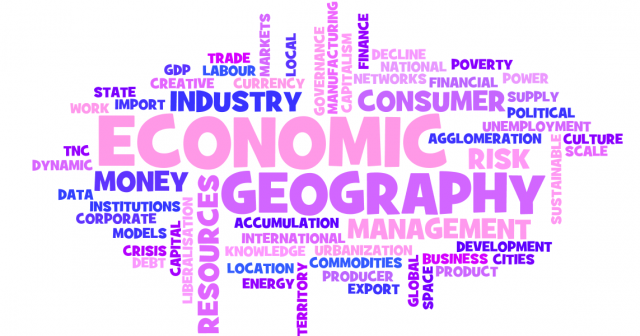In this section, we will discuss the most important section of geography i.e. Social and economic geography. The resource is a cultural construct as it is an interface between the human population and technology. The resource is a gift of nature that can serve or is presently serving human needs and wants.
Human Population – Resources – Technology
As the human population grows, the quality of life improves which places more demand for resources. To meet this demand, technology is modernized and resources are used extensively and intensively that improves the supply of resources based on human populations, resources and technology, and their inter-relationship, the world has been divided into the following 5 regions.
- Countries with High Population Density with High Technology: These countries have high economic development that has been mostly facilitated by their technological achievements. These countries, though import natural resources; with the help of modern technology, these resources are optimally utilized, processed, and exported. For example, Japan, Britain.
- Countries with Low Population Density with High Technology: These countries are economically developed and their development has been facilitated by the use of machines & technology. Resources that are surplus have been explored, conserved, and preserved for future generations. For example, the USA, Canada, Australia, New Zealand.
- Countries with High Population Density and Low Technology: These countries have to overburden their natural resources as their population exceeds the availability of natural resources. With the overuse of natural resources, resource degradation is a natural phenomenon. As the level of the technology is relatively low, the development and exploration of alternative resources are also slow For example, India, Bangladesh, Pakistan, and China.
- Countries with Low Population Density and Low Technology: These countries are under-population nor is their technology up-to-date. Economic development is slow, resources are underused or unexplored. For example, Brazil, Argentina, Sudan, etc.
- Countries with Environmentally Depressed Conditions: Their economic development is extremely low due to adverse climatic and environmental conditions. However, these areas are now regarded as Resource Frontiers. Eg: Equatorial Forests, Polar regions of USA, Canada, Russia, Baltic countries, Sahara Desert, Their desert in India, etc. These resource frontiers will be explored and used in the future once these become uncovered.


Resource Development & Sustainability
Resource Degradation – Adverse quantitative and qualitative change in environmental & natural resources is known as resource degradation. Because of overuse and over-exploitation, the stock is declining i.e., in terms of quantitative. Adverse qualitative changes are related to the release of pollution during production, processing, and use.
As resources are degrading now, population growth and economic growth are a dilemma. According to Malthus, food is necessary for the substance of the population. The supply of food is a limit on the expansion of the population. He said that if the growth of population is geometric (1,2,4,8,16 ..) whereas the growth of food production is arithmetic progression (1,2,3,4,5), it results in the limit of population. Because the progression is dissimilar, there could be starvation & large scale food and nutritional problems, hunger, and death.
Limited food production on the land itself controls the growth of the population. However, the view of Malthus was negated as we’ve Had Industrial Revolution and Green Revolution vide which production increased. There was a drastic improvement in transport and trade facilities. The food is transported from the surplus area to the deficit area.
The concept of Malthus was again revived in 1972 called Neo – Malthus. A report was generated by the Food and Agriculture Organisation (FAO) called “Limit To Growth” also called The Club Of Rome. The following five indicators fix the upper limit to a finite value as under
- Arable Land
- Agricultural Productivity
- Industrial Productivity
- Exhaustible resources
- The capacity of the earth to absorb pollution
As its probability is fixed, we cannot expand and sustain the population and economy beyond 2100 AD. If the limit exceeds the population, the economy collapses.
Theory of Hope (Concept of Sustainable Development)
Man is the ultimate source of creativity and it is responsible for improvement, innovation & invention. Human creativity is the ultimate source of sustainable development and a report was generated in 1987 by our common future in the UN Commission on Environmental Development.
Dimensions of Sustainability
- Long-lasting development
- Synchronization of environment, economy, ecology & ethics.
- Intergeneration and intergeneration equity.
Long-Lasting Development
It depends on sustaining the supply of natural and environmental resources. For that, we need to maintain a balance between the use and regeneration of resources. For that,
- Exhaustible resources must be conserved and preserved and replaced with renewable resources.
- Renewable resources must be used within their carrying capacity i.e., productive capacity and they should be generated.
Synchronization of Environment, Economy & Ethics

Ecology – Conservation & preservation of the forest, Grassland, water, sell, the ozone layer, biodiversity, wildlife, etc…
Ethics – There must be a harmonized relationship between man and the environment.
Intra-generation & Intergeneration equity
Intra-Generation Equity stands for improving the well-being and welfare of the poor sections of society through Trickle Down. There must be beneficiary growth of economy & poverty. The present generation must involve in “need-based” use of the natural environment so that the potentiality of the future generation of use of natural environment resources are not compromised.


